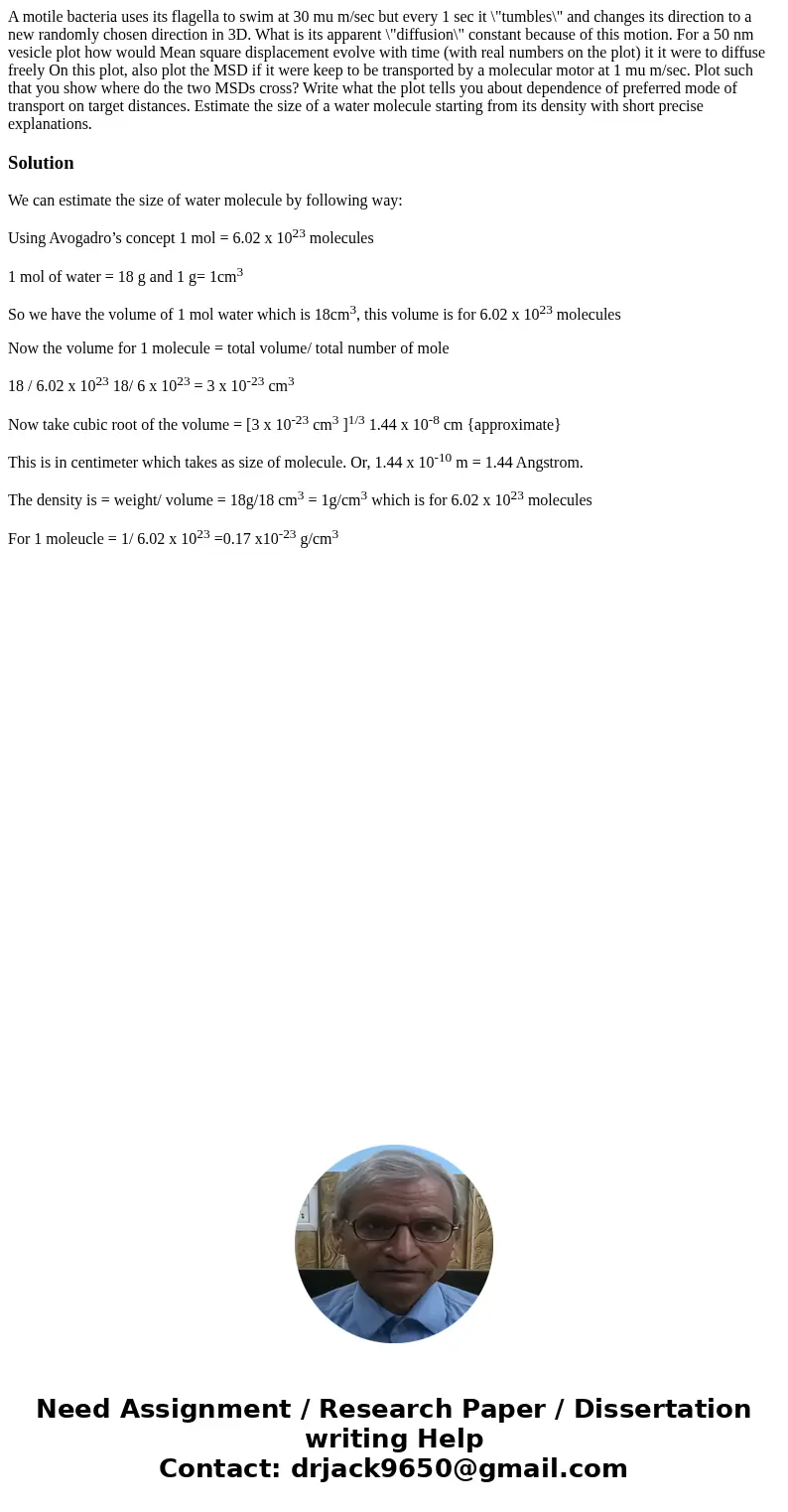A motile bacteria uses its flagella to swim at 30 mu msec bu
A motile bacteria uses its flagella to swim at 30 mu m/sec but every 1 sec it \"tumbles\" and changes its direction to a new randomly chosen direction in 3D. What is its apparent \"diffusion\" constant because of this motion. For a 50 nm vesicle plot how would Mean square displacement evolve with time (with real numbers on the plot) it it were to diffuse freely On this plot, also plot the MSD if it were keep to be transported by a molecular motor at 1 mu m/sec. Plot such that you show where do the two MSDs cross? Write what the plot tells you about dependence of preferred mode of transport on target distances. Estimate the size of a water molecule starting from its density with short precise explanations.
Solution
We can estimate the size of water molecule by following way:
Using Avogadro’s concept 1 mol = 6.02 x 1023 molecules
1 mol of water = 18 g and 1 g= 1cm3
So we have the volume of 1 mol water which is 18cm3, this volume is for 6.02 x 1023 molecules
Now the volume for 1 molecule = total volume/ total number of mole
18 / 6.02 x 1023 18/ 6 x 1023 = 3 x 10-23 cm3
Now take cubic root of the volume = [3 x 10-23 cm3 ]1/3 1.44 x 10-8 cm {approximate}
This is in centimeter which takes as size of molecule. Or, 1.44 x 10-10 m = 1.44 Angstrom.
The density is = weight/ volume = 18g/18 cm3 = 1g/cm3 which is for 6.02 x 1023 molecules
For 1 moleucle = 1/ 6.02 x 1023 =0.17 x10-23 g/cm3

 Homework Sourse
Homework Sourse